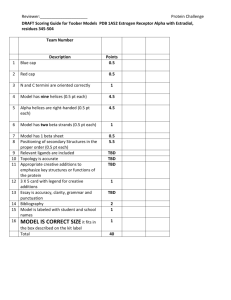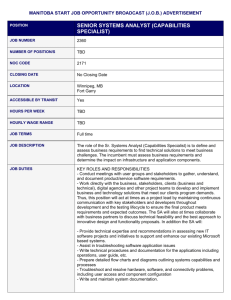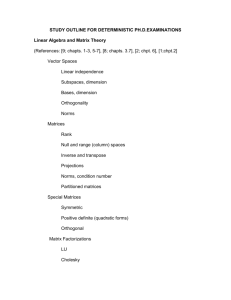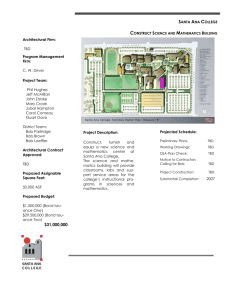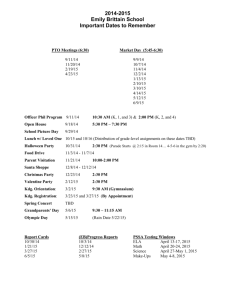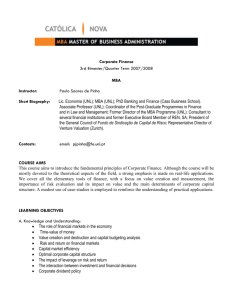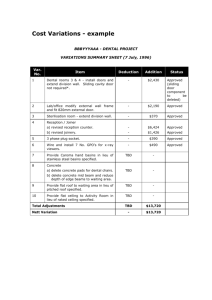GPH-GU 2255 Psychoactive Drug Use and Public Health
advertisement
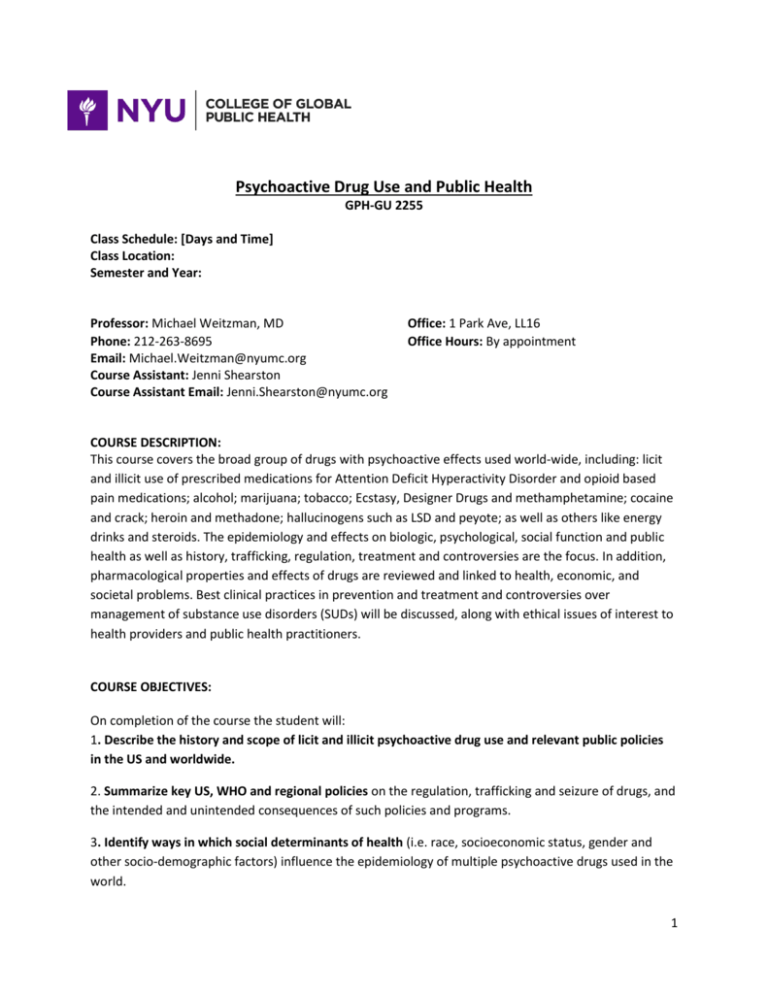
Psychoactive Drug Use and Public Health GPH-GU 2255 Class Schedule: [Days and Time] Class Location: Semester and Year: Professor: Michael Weitzman, MD Phone: 212-263-8695 Email: Michael.Weitzman@nyumc.org Course Assistant: Jenni Shearston Course Assistant Email: Jenni.Shearston@nyumc.org Office: 1 Park Ave, LL16 Office Hours: By appointment COURSE DESCRIPTION: This course covers the broad group of drugs with psychoactive effects used world-wide, including: licit and illicit use of prescribed medications for Attention Deficit Hyperactivity Disorder and opioid based pain medications; alcohol; marijuana; tobacco; Ecstasy, Designer Drugs and methamphetamine; cocaine and crack; heroin and methadone; hallucinogens such as LSD and peyote; as well as others like energy drinks and steroids. The epidemiology and effects on biologic, psychological, social function and public health as well as history, trafficking, regulation, treatment and controversies are the focus. In addition, pharmacological properties and effects of drugs are reviewed and linked to health, economic, and societal problems. Best clinical practices in prevention and treatment and controversies over management of substance use disorders (SUDs) will be discussed, along with ethical issues of interest to health providers and public health practitioners. COURSE OBJECTIVES: On completion of the course the student will: 1. Describe the history and scope of licit and illicit psychoactive drug use and relevant public policies in the US and worldwide. 2. Summarize key US, WHO and regional policies on the regulation, trafficking and seizure of drugs, and the intended and unintended consequences of such policies and programs. 3. Identify ways in which social determinants of health (i.e. race, socioeconomic status, gender and other socio-demographic factors) influence the epidemiology of multiple psychoactive drugs used in the world. 1 4. Contrast and compare the effects of various drugs used on the biological, psychological and social function of persons, as well as the effects of use on society, care practices, and public health. 5. Describe the principles and best practices for treatment of severe substance use disorders 6. Describe the principles and best practices for the prevention of severe substance use disorders 7. Compare and contrast approaches and controversies to drug related policies, such as prohibition of alcohol, legalization of marijuana, public education and health care counseling efforts, frisk and search efforts, harm reduction efforts (needle exchange programs), and the legalization of selected drugs in the US and other countries and regions. PRE-REQUISITES: No Pre-requisites COMPETENCIES COVERED IN THE COURSE: Objective # 1 2 3 4 5 6 7 Competency 3. Understand the patterns of disease and injury in human populations and apply to the control of health problems. 13. Recognize system level properties that result from dynamic interactions among human and social systems and how they affect the relationships among individuals, groups, organizations, communities, and environments. 4. Understand practices associated with the delivery, quality, and costs of health care for individuals and populations. 5. Apply managerial and policy approaches regarding the structure, process and outcomes of health services including the costs, financing, organization, outcomes and accessibility of care. 6. Apply constructs of behavioral, social and cultural theories related to individual and population health and health disparities over the life course. 4. Understand practices associated with the delivery, quality, and costs of health care for individuals and populations. 10. Incorporate public health biology – the biological and molecular context of public health – into public health practice. 2. Recognize environmental factors including biological, physical and chemical factors that affect the health of a community. 10. Incorporate public health biology – the biological and molecular context of public health – into public health practice. 11. Demonstrate ethical choices, values and professional practices implicit in public health decisions while considering the effect of choices on community stewardship, equity, social justice and accountability. 12. Demonstrate the ability to plan for the design, development, implementation, and evaluation of strategies to improve individual and community health. 13. Recognize system level properties that result from dynamic interactions among human and social systems and how they affect the relationships among individuals, groups, organizations, communities, and environments. 2 COURSE REQUIREMENTS AND EXPECTATIONS: A. REQUIRED READINGS Each week, students will be required to read chapters from Chasing the Scream and Buzzed, as described below. In addition, other specific articles and selections from books will be assigned for particular talks. Students will be expected to read all of the required readings assigned for that day’s class. In addition, relevant websites and books on national and international drug policies and statistics will be recommended. Required Booklist: Hari J. Chasing the Scream: The First and Last Days of the War on Drugs. New York: Bloomsbury USA; 2015. Kuhn C, Swartzwelder S, Wilson W. Buzzed: The Straight Facts about the Most Used and Abused Drugs from Alcohol to Ecstasy. New York: W.W. Norton & Company, Inc; 2014. Suggested Booklist: Halkitis P. Methamphetamine Addiction: Biological Foundations, Psychological Factors, and Social Consequences. Washington D.C.: American Psychological Association; 2009. Musto D. The American Disease: Origins of Narcotic Control. USA: Oxford University Press; 1999. Okrent D. Last Call: The Rise and fall of Prohibition. New York: New York Times Co.; 2010. Markel H. An Anatomy of Addiction: Sigmund Freud, William Halsted, and the Miracle Drug Cocaine. New York: Pantheon Books; 2011. Huxley A. The Doors of Perception; and, Heaven and hell. New York: Harper & Row; 1963. B. ASSIGNMENTS Mini-Essays: Mini-essays will be assigned asking questions about students’ reaction to the readings. A question will be provided in advance, based on the assigned readings. Responses should address the question and be between 1 and 2 double spaced pages, in 12 pt. font. Students should reference at least one of the assigned readings in their response. Essays will be graded based on depth of thought and reflection as well the quality of comprehension of the content of the readings—there is no right or wrong answer—we simply want to hear what the students think about the topic and question provided. Term Papers: Students will decide upon the topic for their term paper by the end of Week 4 (TBD), after discussion with the Instructor. Students may choose topics on their own or choose from a list of potential topics provided by the Instructor. Term papers will be due a week before the end of the course (TBD). Group Presentations: Students will randomly be assigned to groups of 3-5 depending on class size. Each group will create a 10 minute presentation on a discrete relevant case study during the last class of the semester. Students may select a topic of their choice; however the topic must be discussed in a global public health context. Topics will be decided by the end of Week 6 (TBD). Group presentations will be given in class on TBD, the last day of class. After all groups have presented, the entire class will discuss. 3 C. PARTICIPATION Student input and discussion greatly influences the richness of the educational experience of a course such as this and all students will be encouraged to actively participate in each class discussion. Participation will be evaluated as follows: Students will be able to earn 5 points for each class attended (up to 75 points total) o For each class, 3 points will be awarded for showing up o For each class, 2 additional points can be earned by asking at least one thoughtful question or making at least one insightful comment D. ATTENDANCE / TARDINESS We understand that emergencies and sicknesses do arise, and realize that students may need to miss class on occasion. If students need to miss class for any reason, an explanation via email to the professor with his approval will result in no penalty, and no loss of participation points. However, missing class without approval of the instructor will result in loss of the day’s participation points. Please be punctual, as tardiness can be very disruptive in a discussion. If you are late multiple times the instructor will ask to speak with you, and you may lose some participation points. GRADING RUBRIC: Item Class Participation Mini-Essays Term Paper Group Presentation Percentage 10% 20% 40% 30% GRADING SCALE: A: A-: B+: B: B-: 93-100 90-92 87-89 83-86 80-82 C+: C: C-: D+: D: F: 77-79 73-76 70-72 67-69 60-66 <60 NYU CLASSES: NYU Classes will be used extensively throughout the semester for assignments, announcements, and communication. Details about assignments will be posted at the beginning of the semester. NYU Classes is accessible at https://home.nyu.edu/academics TECHNOLOGY POLICY: The richness of teaching and student participation frequently is enhanced by students utilizing the internet to look up answers to questions that arise during discussions. Therefore, laptops and phones 4 are welcome and encouraged in the classroom, as long as they do not distract other students or are used for personal activities during class. COURSE OUTLINE: Date TBD TBD TBD TBD TBD TBD TBD TBD TBD TBD TBD TBD Topics Introduction: Class Requirements, Expectations, and Content Introduction: Substance Use Disorders in the US and Worldwide NYCDOH -Drug Policies and Programs for Prevention and Treatment Readings/Materials Due Assignments Due Hari, Chpts, 1-2 Buzzed chpts. 13-14 Palamar J. “They Deserved to Die” Hari, Chpts, 3-4 Buzzed chpts 15-16 Degenhardt et al, 2011 Hari, Chpts 5-6 Degenhardt et al, 2012 Medically Prescribed Drugs Dependence and Addiction Treatment Alcohol Heroin and Opioids Cocaine and Crack Maternal use of Illicit Opioids Tobacco Products Ecstasy, Methamphetamines, and Energy Drinks Marijuana Hari, Chpts 7-8 Buzzed Chpt 10 Haffajee, 2015 Hari, Chpts 9-10 Pincus and England, 2015 TBD Hari, Chpts.11-12 Buzzed Chpt 1 The Irrationality of Alcoholics Anonymous Palamar et al, 2014 Hari, Chpts. 13-14 Buzzed Chpt 9 The Antedote, by Ian Frazier Hari, Chpts. 15-16 Buzzed Chpt 12 Kulze, 2015 Hari, Chpts. 17-Conclusion Tolia et al, 2015 A Sillborn Child, A Charge of Murder… Buzzed Chpt. 8 Giovino et al, 2012 Buzzed Chpt. 3 Drumright et al, 2006 Buzzed Chpt. 7 The Life of a Pot Critic Group Presentation Topics Due Mini-Essay #1 Due Term Paper Topics Due Mini-Essay #2 Due Mini-Essay #3 Due Mini-Essay #4 Due 5 TBD Hallucinogens TBD Controversies in the Legal System and Drug Regulation The Rise and Fall of the Biggest Pot Dealer in New York City History What Science Says about Marijuana The Injustice of Marijuana Arrests Seeking the Facts on Medical Marijuana Of Pot and Percocet Legal Use of Marijuana Clashes With Job Rules In Colorado, a Rebranding of Pot Inc Congress’s Double-Edged Marijuana Stance Palamar et al, 2014 Buzzed Chpt. 4 The Trip Treatment, by Michael Pollan New Psychoactive Substances in Europe, 2015 Weaver et al, 2015 TBD Group Presentations None Term Paper Due Group Presentations Due READING/VIEWING LIST: Class 1 (TBD): Introduction to the course: review of the content, objectives, expectations and process of student class evaluation. In addition, this class will begin a discussion of relevant terminology, sources of information and a general introduction to the epidemiology (prevalence and sociodemographic characteristics of individuals with Substance Use Disorders [SUDs]), and the consequences of SUDs on individuals. Assigned Readings: Hari, Chpts. 1-2 Buzzed, Chpts. 13-14 Palamar J. “They Deserved to Die” and other views on drug use. The Independent. 2015. Suggested Readings: Musto, Chpts. 1-3 Class 2 (TBD): Introductory Discussion Part 2, Substance Use Disorders in the US and World-wide. This class continues Class 1 with a more detailed general discussion of the family, societal, penal and economic effects of SUDs. It also provides an overview of drug trafficking, regulation and scheduling in the US and world-wide. Classes 1-3 are intended to give an in-depth overview of the individual drugs, treatment approaches and controversies concerning SUDs in the US and world-wide. Assigned Readings: Hari, Chpts. 3-4 Buzzed, Chpts. 15-16 6 Degenhardt L, Bucello C, Calabria B, Nelson P, Roberts A, Hall W, Lynskey M, Wiessing L, GBD illicit drug use writing group. What data are available on the extent of illicit drug use and dependence globally? Results of four systematic reviews. Drug and Alcohol Dependence. 2011:117:85-101. Suggested Readings: Musto, Chpts. 6-7 Class 3 (TBD): New York City Department of Health and Mental Hygiene Drug Policies and Programs for Drug Prevention and Drug Treatment. As a major urban center with a Health Department widely respected for the breadth, quality and effectiveness of its preventive and therapeutic programs for a wide range of public health problems, its services for SUDs serves as an excellent case study of real world approaches to the many SUDs in the US. Guest Speaker: Hillary Kunins MD, Acting Deputy Commissioner, Mental Health for the NYC DOHMH Assigned Readings: Hari, Chpts, 5-6 Degenhardt L, Hall W. Extent of illicit drug use and dependence, and their contribution to the global burden of disease. the Lancet. 2012:376:55-70. Suggested Readings: Musto, Chpts. 4-5 CLASS 4 (TBD): Use of medically prescribed psychoactive drugs such as those for ADHD, depression and pain management for (a) medically indicated purposes and (b) use of such psychoactive drugs obtained illicitly. More than 10% of US children and adults take prescribed psychoactive drugs, and the licit and illicit use of such drugs are increasing in the US and world-wide. The indications, side effects, abuse and controversies surrounding the use of these substances are discussed. Assigned Readings: Hari, Chpts 7-8 Buzzed, Chpt. 10 Sedatives Haffajee R. Mandatory use of prescription drug monitoring programs. JAMA. 2015:313(9):891892. Suggested Readings: Chirdkiatgumchai V, Xiao H, Fredstrom B, Adams R, Epstein J, Shah S, BrinkmanW, Kahn R, Froehlich T. National trends in psychotropic medication use in young children: 1994-2009. Pediatrics. 2013:132(4):615-623. Jenco M. AAP: No evidence that drug testing in schools reduces substance use. AAP News. 2015:36(4). Musto, Chpts. 8-11 Soloman A. The Secret Sadness of Pregnancy with Depression. The New York Times. May 28, 2015. NYTimes.com. Accessed June 4, 2015. Class 5 (TBD): Youth Dependence and Addiction Treatments The pyramid of the severity of SUDS is often not fully understood—there are misperceptions surrounding prevalence of severe disorders, as 7 well as treatment options. This talk will detail prevalence of youth drug use, including risk factors, and the importance of family interventions in making a difference. The second part of the conversation will discuss treatment modalities, barriers to treatment, and available resources. Guest Speaker: Partnership for Drug Free Kids Assigned Readings: Hari, Chpts. 9-10 Pincus H, England M J. Improving the quality of psychosocial interventions for mental and substance use disorders: a report from the IOM. The Journal of the American Medical Association. July 16, 2015. http://jama.jamanetwork.com/article.aspx?articleID=2398305&utm_source=Silverchair%20Info rmation%20Systems&utm_medium=email&utm_campaign=JAMA%3AOnlineFirst07%2F16%2F2 015. Accessed July 17, 2015. TBD Suggested Readings: Musto, Chpts12-13 Class 6 (TBD): Global Alcohol Use. Alcohol is the most widely used and abused psychoactive agent worldwide, exceeded only by tobacco as a nicotine delivery vehicle in terms of global morbidity and mortality. This class focuses on its history, its deleterious effects on individuals, families and societies, the prevalence and epidemiology by region and country and policies and practices aimed at regulating, preventing and treating the negative effects of this ubiquitous agent. Assigned Readings: Hari, Chpts.11-12 Buzzed, Chpt. 1 Alcohol Glaser G. The Irrationality of Alcoholics Anonymous. The Atlantic. 2015, April. http://www.theatlantic.com/features/archive/2015/03/the-irrationality-of-alcoholicsanonymous/386255/ Palamar J, Fenstermaker M, Kamboukos D, Ompad D, Cleland C, Weitzman M. Adverse psychosocial outcomes associated with drug use among US high school seniors: a comparison of alcohol and marijuana. The American Journal of Drug and Alcohol Abuse, Early Online: 1-9. 2014. Suggested Readings: NIH National Institute on alcohol Abuse and Alcoholism. Alcohol Use Disorder: A Comparison Between DSM-IV and DSM-5. NIH Publication No. 13-7999, November 2013. Last Call, By Daniel Okrent Class 7 (TBD): Heroin and Opioids. Heroin has recently reached epidemic proportions in small towns in the US, and has resulted in the implementation of new treatments. It has served as a model for harm reduction efforts, including needle exchange programs and methadone maintenance programs. These agents have been intimately tied to the HIV epidemic, sex trafficking, and profoundly high rates of incarceration, which itself have multiple devastating individual and societal effects. Assigned Readings: Hari, Chpts. 13-14 8 Buzzed Chpt. 9 Opiates Frazier I. The Antidote. The New Yorker. September 8, 2014. Suggested Readings: TBD Class 8 (TBD): Cocaine and Crack. These agents very often have devastating effects on users, their families (including their children who may be exposed and adversely affected in utero) and communities world-wide, including not just communities where they are widely used, but also in the countries of origin. Widespread and profound disparities in incarceration rates and length of incarceration for crack vs. cocaine possession are being widely debated and considered for alteration. Assigned Readings: Hari, Chpts. 15-16 Buzzed Chpt. 12 Stimulants Kulze E. The disparity between crack and cocaine arrests show how the system targets poor people. Business Insider. February 22, 2015. Suggested Readings: An Anatomy of Addiction: Sigmund Freud, William Halsted, and the Miracle Drug Cocaine, By Howard Markel Palamar J, Davies S, Ompad D, Cleland C, Weitzman M. Powder cocaine and crack use in the United States: An examination of risk for arrest and socioeconomic disparities in use. Drug and Alcohol Dependence. 2015. Class 9 (TBD): Maternal use of illicit opioids, and the construct of child abuse. In utero exposure to illicit opioids is a longstanding and growing public health problem with profound implications for parents, children, the foster care system and entire communities. The frequent conceptualization of maternal use of illicit opioids as immoral, both during pregnancy and during the child rearing years, has many unintended untoward consequences. Utilizing such a conceptualization remains as a very frequent underpinning of the current standard of care. This class will discuss the ethical implications and practical consequences of this approach, and potential solutions to changing it. Guest Speaker: Jonah Fleisher, MD, MPH Candidate Assigned Readings: Hari, Chpts. 17-Conclusion Tolia V, Patrick S, Bennett M, Murthy K, Sousa J, Smith P, Clark R, Spitzer A. Increasing incidence of the neonatal abstinence syndrome in U.S. neonatal ICUs. The New England Journal of Medicine:2015:372(22). Martin N. A stillborn child, a charge of murder and the disputed case law on ‘fetal harm.’ ProPublica www.probulica.org. March 18, 2014. Suggested Readings: TBD 9 Class 10 (TBD): Tobacco as a global health issues: use, uptake, effects and the new face of alternative tobacco products. Tobacco use is the leading preventable cause of death in the world, killing more people than HIV, Malaria and Tuberculosis combined. More than 1 billion people will die of tobacco related diseases this century. Tobacco is a nicotine delivery system, i.e. it is used to obtain the psychoactive drug of nicotine. Nicotine has had profound effects on history, greatly influencing the slave trade to the New World, and there are major socio-demographic and geographic variations in its use worldwide. Countless effective policies, regulations and practices exist to prevent and treat tobacco use and nicotine dependence, but these are all threatened by the emergence of new alternative tobacco products such as hookahs (water pipes), smokeless tobacco and alternative nicotine delivery systems such as e-cigarettes. Assigned Readings: Buzzed Chpt. 8 Nicotine Giovino G, Mirza S, Samet J, Gupta P, Jarvis M, Bhala N, Peto R, Zatonski W, Hsia J, Morton J, Palipudi K, Asma S, GATS Collaborative Group. Tobacco use in 3 billion individuals from 16 countries: an analysis of nationally representative cross-sectional household surveys. Lancet. 2012:380:668-79. Suggested Readings: Zhou S, Rosenthal D, Sherman S, Zelikoff J, Gordon T, Weitzman M. Physical, behavioral, and cognitive effects of prenatal tobacco and postnatal secondhand smoke exposure. Current Problems in Pediatric Adolescent Health Care. 2014:217-241. Class 11 (TBD): Ecstasy, Methamphetamines, Energy Drinks. The past decade has witnessed an epidemic of use of newly designed drugs such as Ecstasy (MDMA, Molly) and methamphetamines. Methamphetamines have literally ravaged entire communities in the US, and Ecstasy has resulted in numerous adverse effects, including death. The use of these drugs is especially common among adolescents and young adults throughout the US and the developed world. The scope of the use and problems caused by these agents, and global efforts to limit their use and negative health consequences are the focus of this class. Assigned Readings: Buzzed Chpt. 3 Ecstasy Drumright L, Patterson T, Strathdee S. Club drugs as causal risk factors for HIV acquisition among men who have sex with men: a review. Substance Use and Misuse. 2006:41: 1551-1601. Suggested Readings: Methamphetamine Addiction: Biological Foundations, Psychological Factors, and Social Consequences, by Perry Halkitis Klitzman R, Pope H, Hudson J. MDMA (“Ecstasy”) abuse and high-risk sexual behaviors among 169 gay and bisexual men. American Journal of Psychiatry. 2000:157:1162-1164. Class 12 (TBD): Marijuana. Marijuana has a long history of use in the US and world-wide. In the recent past states throughout the US have begun to legalize marijuana for medical and recreational purposes, leading to a large number of anticipated and unanticipated public health issues, all of which raise important issues concerning the regulation of other illicit psychoactive drugs. These issues, and the world-wide use and regulation of marijuana, is the focus of this class. 10 Assigned Readings: Buzzed Chpt. 7 Marijuana Palamar J, Fenstermaker M, Kamboukos D, Ompad D, Cleland C, Weitzman M. Adverse psychosocial outcomes associated with drug use among US high school seniors: a comparison of alcohol and marijuana. The American Journal of Drug and Alcohol Abuse, Early Online: 1-9. 2014. Bennett J. The Life of a Pot Critic. New York Times. November 7, 2014. http://nyti.ms/1Eca4an. Accessed January 2, 2015. Feuer A. The Rise and Fall of the Biggest Pot Dealer in New York City History. New York Times. September 5, 2014. http://nyti.ms/1pU31B5. Accessed January 2, 2015. Boffey P. What Science Says about Marijuana. The New York Times. July 30, 2015. http://nyti.ms/1zwMFA3. Accessed January 2, 2015 Wegman J. The Injustice of Marijuana Arrests. The New York Times. July 28, 2014. http://nyti.ms/1nTqLTc. Accessed January 2, 2015. Dreifus C. Seeking the Facts on Medical Marijuana. The New York Times. March 23, 2014. http://nyti.ms/1HtA3QL. Accessed March 24, 2015. Bachluber M, Barry C. Of Pot and Percocet. The New York Times. August 29, 2014. http://nyti.ms/1tTVvp5. Accessed January 2, 2015. Healy J. Legal Use of Marijuana Clashes with Job Rules. The New York Times. September 7, 2014. http://nyti.ms/1q47RM1. Accessed January 2, 2015. Bennett J. In Colorado, a Rebranding of Pot Inc. The New York Times. October 3, 2014. http://nyti.ms/1nON77n. Accessed January 2, 2015. The Editorial Board. Congress’s Double-Edged Marijuana Stance. The New York Times. December 10, 2014. http://nyti.ms/1uo4sp2. Accessed January 2, 2015. Suggested Readings: Repp K K, Raich AL. Marijuana and Health: A comprehensive review of 20 years of research. Washington County, Oregon: Department of Health and Human Services; October 20, 2014. Class 13 (TBD): Hallucinogens such as LSD and peyote; Nitrous oxide, Ketamine. Hallucinogens have been used for countless centuries in countless countries across the world for spiritual and religious purposes. They also became very prominent public health issues in the US during the 1960s and 1970s, and are still widely used on college campuses. In addition, the past decade has seen the introduction of a wide range of drugs that are used both for their psychoactive and other biologic effects. Global issues and policies regarding these drugs, and recent findings and questions about their utility (hallucinogens for end of life care, ketamine as an anti-depressive agent) and dangers (seizures and cardiac effects of energy drinks; multiple adverse physical and psychological effects of steroids) will be discussed. Assigned Readings: Buzzed Chpt. 4 Hallucinogens Pollan M. The Trip Treatment. Annals of Medicine. February 9, 2015. Suggested Readings: Doors of Perception by Aldous Huxley Class 14 (TBD): Controversies in Regulation and Penal System Involvement. Substance use disorders are common and profound public problems in the US and world-wide. Much uncertainty and 11 controversy surrounds regulations and policies globally concerning these agents, from legalizing them, regulating their production and distribution, and the legal and penal consequences of their use. Given the scope of issues raised, broad-based and open consideration of controversies are desperately needed and are the focus of this class. Guest Speaker: Joseph Palamar PhD,MPH, Assistant Professor of Population Health at NYUMC, a nationally renowned expert on the use of many psychoactive agents and a provocative thinker and speaker frequently cited in the press. Assigned Readings: European Monitoring Centre for Drugs and Drug Addiction. New psychoactive substances in Europe: An update from the EU Early Warning System. March 2015. Weaver M, Hopper J, Gunderson E. Designer drugs 2015: assessment and management. Addiction Science and Clinical Practice. 2015: 10(8). Suggested Readings: TBD Class 15 (TBD): Presentations by students, discussion of presentations and student discussion of the strengths, weaknesses and proposed changes of the course. STATEMENT OF ACADEMIC INTEGRITY: The NYU Global Institute of Public Health values both open inquiry and academic integrity. Students in the program are expected to follow standards of excellence set forth by New York University. Such standards include respect, honesty and responsibility. The GIPH does not tolerate violations to academic integrity including: Plagiarism Cheating on an exam Submitting your own work toward requirements in more than one course without prior approval from the instructor Collaborating with other students for work expected to be completed individually Giving your work to another student to submit as his/her own Purchasing or using papers or work online or from a commercial firm and presenting it as your own work Students are expected to familiarize themselves with the GIPH and University’s policy on academic integrity as they will be expected to adhere to such policies at all times – as a student and an alumni of New York University. Plagiarism Plagiarism, whether intended or not, is not tolerated in the GIPH. Plagiarism involves presenting ideas and/or words without acknowledging the source and includes any of the following acts: Using a phrase, sentence, or passage from another writer's work without using quotation marks Paraphrasing a passage from another writer's work without attribution Presenting facts, ideas, or written text gathered or downloaded from the Internet as your own Submitting another student's work with your name on it 12 Submitting your own work toward requirements in more than one course without prior approval from the instructor Purchasing a paper or "research" from a term paper mill. Students in the GIPH and GIPH courses are responsible for understanding what constitutes plagiarism. Students are encouraged to discuss specific questions with faculty instructors and to utilize the many resources available at New York University. Disciplinary Sanctions When a professor suspects cheating, plagiarism, and/or other forms of academic dishonesty, appropriate disciplinary action is as follows: The Professor will meet with the student to discuss, and present evidence for the particular violation, giving the student opportunity to refute or deny the charge(s). If the Professor confirms that violation(s), he/she, in consultation with the Program Director may take any of the following actions: o Allow the student to redo the assignment o Lower the grade for the work in question o Assign a grade of F for the work in question o Assign a grade of F for the course o Recommend dismissal Once an action(s) is taken, the Professor will inform the Program Director, and inform the student in writing, instructing the student to schedule an appointment with theAssociate Dean for Academic Affairs, as a final step. The student has the right to appeal the action taken in accordance with the GIPH Student Complaint Procedure. STUDENTS WITH DISABILITIES: Students with disabilities should contact the Moses Center for Students with Disabilities regarding the resources available to them, and to determine what classroom accommodations should be made available. Information about the center can be found here: https://www.nyu.edu/life/safety-healthwellness/students-with-disabilities.html. Students requesting accommodation must obtain a letter from the Moses Center to provide to the instructor as early in the semester as possible. 13
